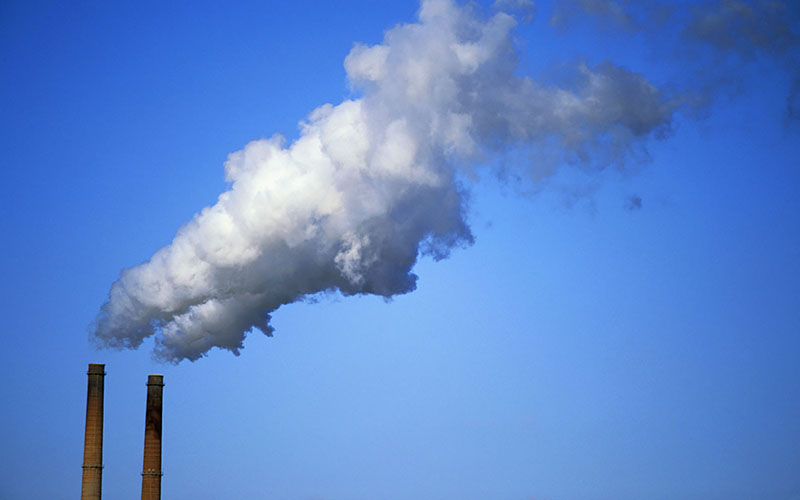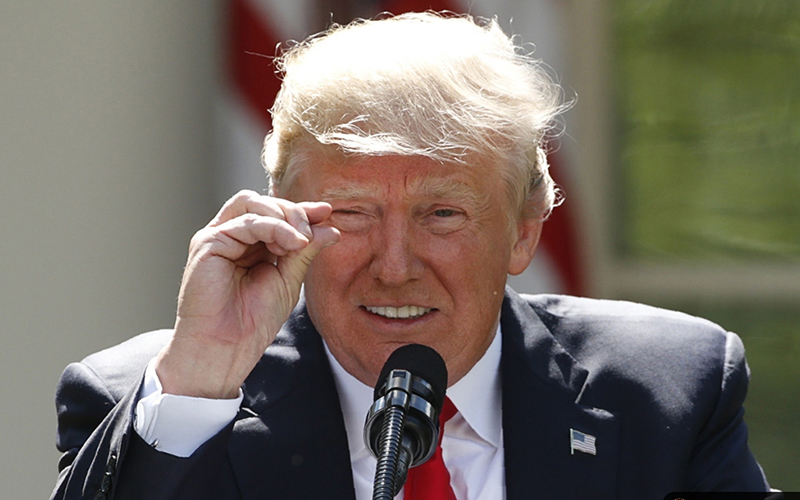
More than 400 mayors have vowed to live up to the standards of the Paris Climate Accords even though a main goal – reducing greenhouse gas emissions to slow the increase in global warming – is largely out of reach of cities. (Photo by Gerald Simmons/Creative Commons)
WASHINGTON – When the U.S. pulled out of the Paris Accords last summer, five Arizona cities joined hundreds around the country that vowed to live up to the Paris climate standards even if the U.S. wouldn’t.
Little has changed in the year since, but the Arizona mayors are sticking to their guns, saying they would rather do something small than nothing at all if the U.S. is going to remain out of the pact.
“While the critics are busying criticizing we are working on addressing the issue,” Flagstaff Mayor Coral Evans said in an email last week.
“Each step, no matter how little is better than doing nothing at all and it is through those cumulative small steps that we will ultimately make a different in the fight to stop climate change,” Evans said.
Flagstaff and four other Arizona cities – Phoenix, Tempe, Tucson and Bisbee – joined what has become 402 other cities around the country who agreed to “adopt, honor and uphold” the principles laid out in the agreement. The accords call on nations to reduce greenhouse gas emissions with a goal of limiting the rise in global temperatures to 1.5 degrees Celsius – or 2.7 degrees Fahrenheit.
The mayors also pledged to “work together to create a 21st century clean energy economy” and ended with, “The world cannot wait – and neither will we.”
The Paris Accords were not binding on any nation, but agreed to by all except Nicaragua and Syria. It does not officially take effect until 2020 and called on countries to set goals to reduce greenhouse gas emissions that are increasing global warming, among other provisions.
But President Donald Trump announced June 1, 2017, that he was pulling the U.S. out of the agreement that he said would cost the country millions of job and trillions of dollars of lost economic output in exchange for a “tiny, tiny amount” of reduction in global temperatures. Trump said at the time that he was willing to enter into negotiations for a new pact, but other nations said that was unlikely, given how long it took to craft the Paris accord.
Immediately after Trump’s announcement, the Climate Mayors – founded in 2014 by Los Angeles Mayor Eric Garcetti as a “high-level peer-to-peer venue for U.S. mayors” to work on areas of common interest – vowed to work toward the accord’s goals in their own cities.
“These are the people that really keep the U.S. running,” said Lauren Faber O’Connor, Los Angeles’ chief sustainability officer. “Americans relate better to them (mayors) than they relate to Washington, D.C., and we firmly believe that we are representing them.”
From 61 mayors before Trump’s announcement, O’Connor said the number of climate mayors “has really grown exponentially,” quadrupling in the first week after the president’s announcement and continuing to add cities since then. The 407 cities signed on include more than 70 million residents in 47 states.
While cities can’t control smokestack emissions or auto pollution limits, they can take other steps.

President Donald Trump, announcing in 2017 that the U.S. will pull out of the Paris Climate Accord, indicates how much temperature change will be achieved by the deal that he said would hit the U.S. economy. (Photo by Kevin Lamarque/Reuters)
Evans said Flagstaff is “actively working on a community wide Climate Action and Adaptation Plan” that is “on track to be completed and brought to City Council for adoption in the late fall.” The city is also adding to its existing climate change mitigation programming, actions that directly align with the Paris Climate Accords.
Bisbee Mayor David Smith said that joining his city with those in the Climate Mayors group was “actually just an extension of something we’ve already been doing.”
“It’s the dynamic, it’s the ongoing process,” Smith said. “We’re not using the Paris Accords as a checkoff list but rather as a guide to what we’re already doing.”
Tempe Mayor Mark Mitchell said in an email that his city remains to fighting climate change, which he called “one of the largest threats to our future health, safety and security.”
“Cities all across the United States are working to fight against global climate change and are taking some huge steps forward to try and combat its future devastating effects,” Mitchell said.
Officials in Phoenix and Tucson did not respond to requests for comment on their participation in the Climate Mayors effort. But experts say those two cities may face one of the biggest challenges in the fight against climate change – controlling urban sprawl and the car culture and emissions that come with it.
“Phoenix, having come up in the age of the automobile … suffers with severe sprawl,” said Andrew Bernier, a postdoctoral research fellow at Arizona State University’s Julie Ann Wrigley Global Institute of Sustainability.
“It (sprawl) encourages more structures, more individual structures, to be built. The more sprawl, the more buildings, the more energy consumption,” Bernier said.
And in the short term, at least, the cities appear to be moving in the wrong direction. A May climate report from the National Centers for Environmental Information revealed that Tucson was experiencing its hottest year on record through that month, while Phoenix posted its fourth-warmest and Flagstaff its eighth-warmest.
But climate records at the local level, and for over such a short period of time, are probably not the best measure of progress, experts said. John Fleming, a staff scientist with the Center for Biological Diversity, and Stephanie Gagnon, the U.S. country manager for the Climate Scorecard, said a better measure of a city’s progress is understanding what it is using to mitigate climate change as a whole, rather than pinpointing a single metric.
Fleming said that ongoing local efforts, such as public transportation, water availability and reducing climate impact on wildlife, are some of the best barometers for progress.
“I really think it comes down to a concerted effort at both the local and the federal level,” Fleming said. “The climate change crisis is so dire that we really need all hands-on deck to really address the issue.”
While some argue that local governments are better able to adapt and implement the most effective means of mitigating climate change in their districts than the federal government, Gagnon said a combination of both federal and local efforts will be necessary to drive change.
“Climate change is a particularly difficult issue to address because it is a truly global problem that affects all countries, regions, and states to varying degrees,” Gagnon said in an email. “When combined with actions taken by many cities, municipalities, states, and/or corporations, we’ll be able to see a difference.”
She said cities will also be best situated to prepare for and respond to damage that comes from climate change.
While Arizona lawmakers like Rep. Raul Grijalva, D-Tucson, welcomed the local efforts, they said the federal government has to play a role fighting “one of the biggest threats facing our environment, economy, and national security.”
“I appreciate the work that mayors across the country are undertaking to safeguard our environment and combat climate change,” Grijalva said in an email. “But it is critical that their efforts be supported by the federal government and global initiatives like the Paris Climate Agreement.”
Grijalva said “strong federal laws and regulations are imperative to ensuring that we are adequately equipped to combat this threat.”
Evans doesn’t disagree. But she said that doesn’t mean Flagstaff shouldn’t do what it can in the meantime.
“I signed the agreement because I thought (and still think) it was the right thing to do,” Evans said. “We do not live in isolation…. We cannot replace the ozone once it is gone. There is not a Planet B.”